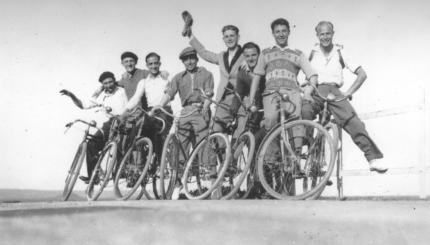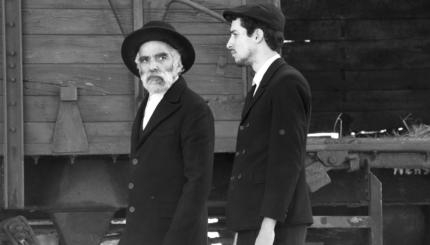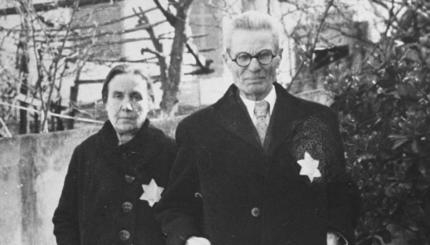Do you remember the Jewish books for kids of days gone by? The majority seemed to focus on holidays, shtetl life, or persecution. Historical fiction and folklore ruled the day. Readers learned a lot about their Jewish past, but not much about their Jewish present.
With changes in the Jewish zeitgeist came changes in the literature. Today, Jews in the Western world are less shy about their identity and are ready to reach out to others. New children’s books reflect this confidence as they explore deep issues of Jewish identity, offer playful expressions of Judaism, and portray Jews as multifaceted characters rather than ethnic symbols. Most recent Jewish “kidlit” is all, in one way or another, about embracing Jewish identity.
Choosing Jewish Identity
The greater popularity of “chick lit” for young girls and teens has translated into Jewish writing on spiritual self-examination. This has helped to create a segment of youth literature aimed at teenagers and young adults. In this contemporary Jewish literature, characters think deeply about what it means to be Jewish and choose to embrace their heritage because they find personal meaning in it.
 Two recent winners of the Sydney Taylor Book Award, the only prize that focuses solely on Judaic literature for young people, each help older readers explore a young woman’s understanding of God in a Jewish context. Feeling abandoned by God after her mother and sister die in a house fire, Cara in Julia’s Kitchen (2006), by Brenda A. Ferber, eventually learns to see God as sympathetic rather than protective. In Confessions of a Closet Catholic (2005), by Sarah Darer Littman, Justine is pressured by her family to be “Jewish, but not too Jewish.” Exasperated, she embraces her best friend’s Catholicism in a journey that ultimately leads her back to her own heritage.
Two recent winners of the Sydney Taylor Book Award, the only prize that focuses solely on Judaic literature for young people, each help older readers explore a young woman’s understanding of God in a Jewish context. Feeling abandoned by God after her mother and sister die in a house fire, Cara in Julia’s Kitchen (2006), by Brenda A. Ferber, eventually learns to see God as sympathetic rather than protective. In Confessions of a Closet Catholic (2005), by Sarah Darer Littman, Justine is pressured by her family to be “Jewish, but not too Jewish.” Exasperated, she embraces her best friend’s Catholicism in a journey that ultimately leads her back to her own heritage.

Help us keep Jewish knowledge accessible to millions of people around the world.
Your donation to My Jewish Learning fuels endless journeys of Jewish discovery. With your help, My Jewish Learning can continue to provide nonstop opportunities for learning, connection and growth.
Another teen novel, Strange Relations (2007), by Sonia Levitin, features Marne, an assimilated Jew who spends a summer with Orthodox relatives. Their life seems restrictive and uncomfortable until she learns to see the love and spirituality behind their unfamiliar practices. In A Brief Chapter in My Impossible Life (2006), by Dana Reinhardt, Simone, adopted by agnostic Gentile parents, meets her Jewish birth mother and refines her own understanding of the meaning of religion and family. In all of these “girl books,” we meet characters for whom Judaism is not a given–they choose to express Judaism after finding a personal connection.
Inclusiveness and Diversity
Another recent trend is portraying Jews of diverse backgrounds. In the picture book Hanukkah Moon (2007), by Deborah da Costa, Aunt Luisa teaches her niece Isobel about Jewish Mexican holiday traditions. Deborah Heiligman’s “Holidays Around the World” nonfiction series (2006-2007) uses stunning photographs to show Hanukkah, Passover, and High Holiday celebrations in India, Uganda, Peru, Israel, Poland, Italy, and America.
More complex issues of racial identity are considered in the novel Stealing Home (2006), by Ellen Schwartz, in which a boy born to a Jewish mother and an African-American father learns about his mother’s Jewish family. The picture book Rebecca’s Journey Home (2006), by Brynn Olenberg Sugarman, chronicles a Jewish family’s adoption of an Asian child.
The inclusivity of this genre is also extended to Jews who have been distanced from their religion. The teen, historical novel Incantation (2006), by Alice Hoffman, draws the reader into medieval Spain, where Estrella discovers her family’s converso status–learning that her family had been forced to convert away from Judaism. Despite loss and cruelty felt by the family, she embraces her newfound Judaism.
The title character in Sam I Am (2004), by Ilene Cooper, has grown up unobservant in a Jewish/Episcopalian household. When the dog knocks over the family Hanukkah bush, Sam begins to ask questions about religious identity, belief in God, and human cruelty. He grows in his understanding of and connection to both religions, rather than making a choice of one over the other.
Exploring the relationship between Judaism and the secular world is also a prominent theme. The Sydney Taylor Book Award winning picture book Hanukkah at Valley Forge (2006), by Stephen Krensky, relates how General Washington, fighting for America’s freedom, drew inspiration from the Maccabees’ historical struggle against tyranny. In Vive La Paris (2006), by Esme Raji Codell, a young black girl learns about the Holocaust, bullies, and her own power to rise above cruelty–all inspired by her Jewish piano teacher.
Normalizing Jewish Characters
Recent years have brought an increase in “culturally neutral” books, in which characters happen to be Jewish, but their religious identity is not critical to the story. An excellent example is the adolescent novel Notes from the Midnight Driver (2006) by Jordan Sonnenblick. Notes features Alex, whose drunk driving incident lands him with a grouchy senior citizen to befriend as a community service project. Feisty old Solomon Lewis spouts a lot of Yiddish, but his identity as a jazz guitarist takes precedence over everything else. Sol’s acerbic yet wise friendship helps Alex learn about music, life, and love.
Culturally neutral picture books include slice-of-life stories I Only Like What I Like (2003) and its companion Love Me Later (2005), by Julie Baer. Stunningly illustrated with detailed collage, each story features a child narrator who casually mentions Jewish experiences among other facets of daily life. Similar to what we see in other realms of popular culture, Jewish characters are now simply part of the mix.
Finding Pride in Heritage
The growth of contemporary Jewish literature has included children’s authors pouring memories of Yiddishkeit onto the page. Kibitzers and Fools: Tales My Zayda Told Me (2005), by Simms Taback, uses vibrant cartoon-style illustrations to turn well-known Jewish jokes into short humorous stories. Five Little Gefiltes (2007), by Dave Horowitz, playfully transforms a familiar nursery rhyme about five little ducks into an ode to old New York and Jewish culture. Sydney Taylor Book Award winner Sholom’s Treasure: How Sholom Aleichem Became a Writer (2005), by Erica Silverman, introduces the famous Yiddish author as a young boy and helps readers understand the magnitude of his achievements.
The current surge in Jewish pride coincides with improved technology in the literary arts. This means that it has become easier to create beautiful books that are strongly bound and lushly illustrated. Jewish authors and illustrators have taken advantage of this opportunity to create true works of art that engender pride in Jewish readers while appealing to readers of all backgrounds.
In I Am Marc Chagall (2006), Bimba Landmann uses pictures of three-dimensional mixed media collages of cardboard, fabric, twigs, clay and candles to represent scenes from the life of the famous Jewish artist. Wonders and Miracles: A Passover Companion (2004), by Eric A. Kimmel, is illustrated with reproductions of great works of art, illuminated manuscripts, and even carvings from ancient Egypt.
For older children, the Holocaust memoir Memories of Survival (2005), by Esther Nisenthal Krinitz, is strikingly illustrated with embroidered scenes from the author’s childhood, originally stitched to share her life story with her family. Krinitz’s daughter, Bernice Steinhardt, collected these scenes into book format and added her own moving commentary.
Jewish authors have also become experimental with creative formats. The Bedtime Sh’ma (2007), by Sarah Gershman, is a peaceful meditation on the meaning of the prayer and has an accompanying musical CD. The Miracle of Hanukkah (2006), by Seymour Chwast, uses nested flaps to advance the action during the battle of the Maccabees. The Adventures of Rabbi Harvey: A Graphic Novel of Wit and Wisdom in the Wild West (2006), by Steve Sheinkin, recasts traditional folktales as humorous cowboy comic strips.
In recent years, ethnic awards such as the Jewish Sydney Taylor Book Award, the African-American Coretta Scott King Award, and the Latino Pura Belpré Award have legitimized the appeal of ethnic books to a broader audience, and the value of multiculturalism has been widely accepted by the publishing industry. Jewish literature has benefited greatly from this atmosphere. No longer timid, contemporary Jewish children’s books are compelling, challenging, thoughtful, and proud.
Hanukkah
Pronounced: KHAH-nuh-kah, also ha-new-KAH, an eight-day festival commemorating the Maccabees’ victory over the Greeks and subsequent rededication of the temple. Falls in the Hebrew month of Kislev, which usually corresponds with December.

Help us keep Jewish knowledge accessible to millions of people around the world.
Your donation to My Jewish Learning fuels endless journeys of Jewish discovery. With your help, My Jewish Learning can continue to provide nonstop opportunities for learning, connection and growth.
shtetl
Pronounced: shTETTull, Origin: Yiddish, a small town or village with a large Jewish population existing in Eastern or Central Europe in the 19th and early-to-mid 20th century.

Help us keep Jewish knowledge accessible to millions of people around the world.
Your donation to My Jewish Learning fuels endless journeys of Jewish discovery. With your help, My Jewish Learning can continue to provide nonstop opportunities for learning, connection and growth.


